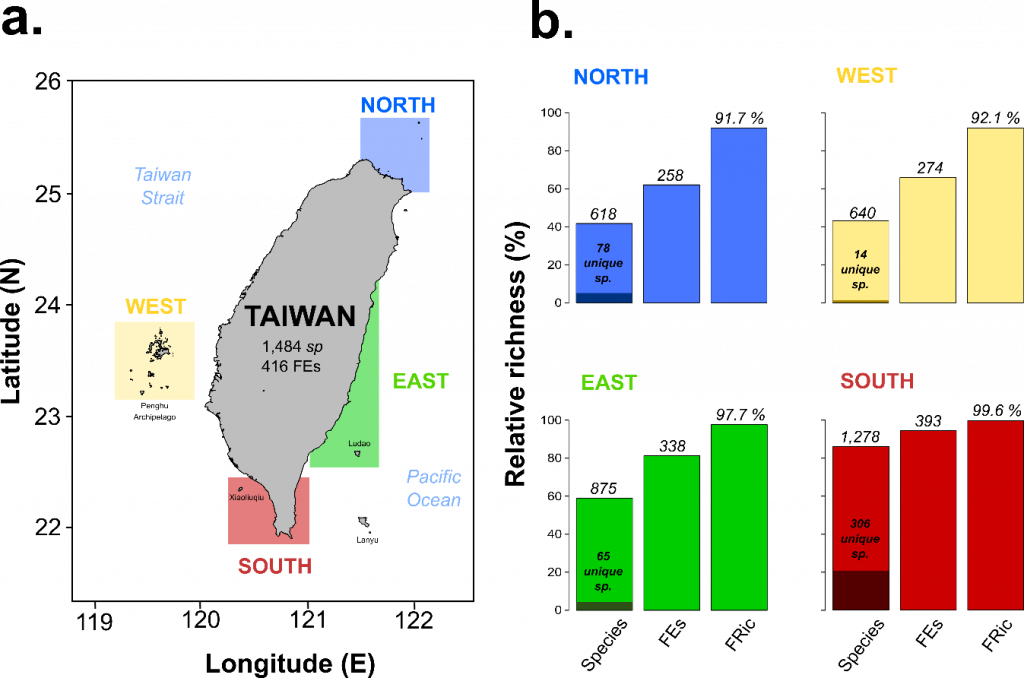Biogeography of functional trait diversity in the Taiwanese reef fish fauna
In Taiwan, the number of reef fish species decrease with latitude because of the changes in environmental conditions around the island. In this study published in January 2019 in Ecology and Evolution, a research team led by Dr. Vianney DENIS from the Institute of Oceanography (National Taiwan University) has investigated the variations in the diversity of traits linked with the role of these fishes in the ecosystem. Six traits were used to categorize the 1,484 reef fish species occurring in four environmentally contrasted regions. The combination of those traits resulted in 416 entities, that decreased from south to north in step with regional species richness. However, the range of trait combinations remained similar between high‐latitude impoverished and diversified tropical fish assemblages. The increasing diversity in the latter contributes mainly to raising the overall redundancy, especially in entities already over-represented in this assemblage. To contrast, regions at intermediate latitudes showed entities highly susceptible to species loss. It suggests that the loss of an entity, and possibly the function it could ensure in the ecosystem, may be first characterized by an increase of its vulnerability, a pattern that could have been overlooked in previous global scale analyses. Overall, this work provide new insights into reef fish trait biogeography in Taiwan, with potential ramifications for the ecosystem functioning.
Reference: Denis V*, Chen JW, Chen Q, Hsieh YE, Lin YV, Wang CW, Wang HY, Sturaro N (2018) Biogeography of functional trait diversity in the Taiwanese reef fish fauna. Ecology and Evolution 9:522-532. doi: 10.1002/ece3.4771
Figure: (a) The four studied regions around Taiwan. (b) Their respective species richness and number of unique species, unique trait combinations (FEs), range of unique trait combinations (FRic). The y‐axis is the percentage of richness in all bar plots











